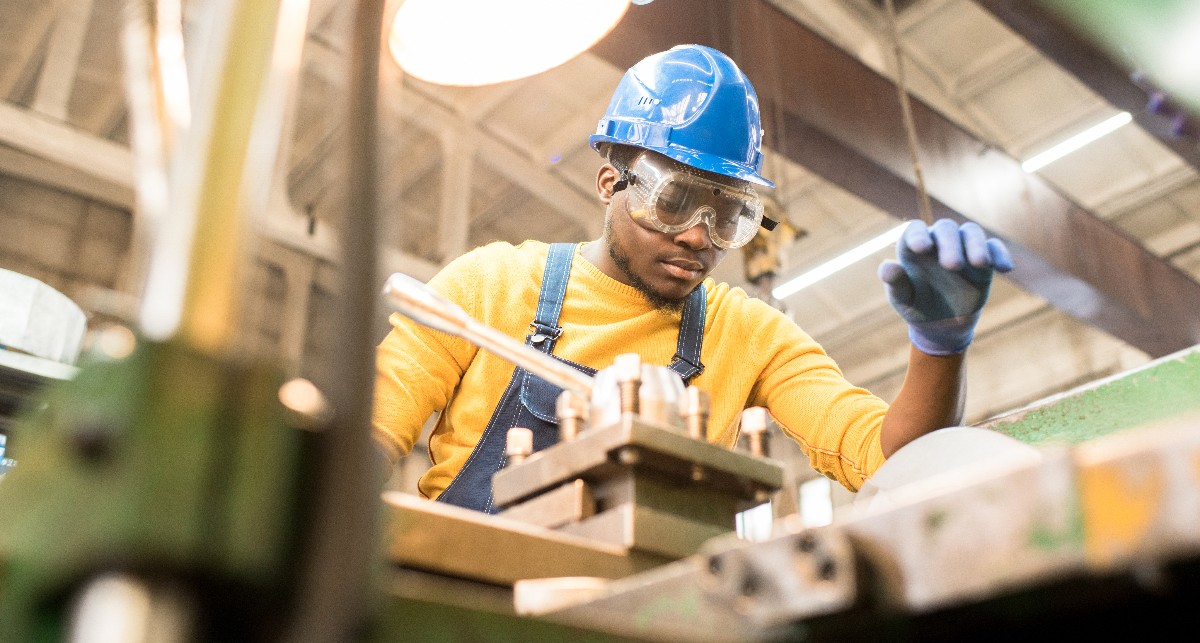Before spring of 2020, signs throughout a manufacturing facility represented that company’s commitment to employee safety in the following way:
___ DAYS ACCIDENT FREE.
THIS PLANT HAS WORKED ___ WITHOUT A LOST TIME ACCIDENT. THE BEST PREVIOUS RECORD WAS ___ DAYS. DO YOUR PART! HELP MAKE A NEW RECORD.
SAFETY FIRST. DAYS SINCE LAST INJURY ___ .
THIS JOB HAS WORKED ___ DAYS WITHOUT AN ACCIDENT.
The goal is two-fold: 1) zero accidents and 2) the highest number of possible days since the last accident. Thanks to the pandemic, though, simply showcasing the number of accident-free days is no longer the be-all, end-all standard of employee safety.
COVID-19 Redefines Employee Safety
Although manufacturers always cared passionately about workplace safety, COVID-19 brought several new expectations to the workplace. Business owners need to consider social distancing, constant workplace sanitation, and monitor every person who visits– along with where they go and what they do in the building– extremely closely for tracing purposes.
Top 9 Workplace Safety Initiatives of 2021 kicked off the year with gusto. This piece starts with a powerful quote that a former OSHA chief of staff and senior policy advisor made in January of 2021:
“What keeps me up at night is that nine months after the beginning of the pandemic, there are still no specific requirements that as a nation, every business that has employees has to implement to mitigate the spread of COVID-19.”
Employers used to focus on protecting employees from what they can see and feel, like faulty equipment and slippery floors– that’s no longer enough. Employers now act as the barrier between the unpredictable and invisible COVID-19 virus and its employees.
Establishing a Positive Safety Culture
Although the coronavirus, without question, created countless headaches and sleepless nights for manufacturers trying to keep up with the ever-changing COVID-19 rules and regulations while operating without a full workforce, thanks to quarantine regulations, there are a few silver linings. As Predictive Safety (PS) says, “Perhaps one positive outcome of the pandemic is a renewed focus on establishing a positive safety culture.” PS goes on to add the following positive perspectives of the pandemic-rattled world:
- “When social distancing, masks, and a constant feeling of caution and vulnerability became part of our daily routines, self-awareness, empathy, and proactive risk management also made an appearance.”
- “The greater health risks associated with physically coming into work and needing to work extra to make up for quarantined/sick coworkers required more understanding and appreciation for workers.”
- “Having the type of empathetic leadership that encourages strong employee retention during these stressful times of labor shortages makes all the difference for businesses.”
There are companies like Auto-Valve, Inc. (AVI) that never closed their doors during the pandemic, and these ‘essential’ businesses learned to bob and weave and adjust and respond to every new safety concern and regulation. Companies like AVI spent the pandemic focused on the safety and health of their employees just as much as they did their products, creating a safety culture that proved to bring the organization and its team members closer.
One thing is clear: 2021 is an opportunity to take employee safety to a whole new level and, by doing so, help employees feel more appreciated and genuinely cared for by their employer than ever before– leading to positive morale and an increased sense of loyalty.





